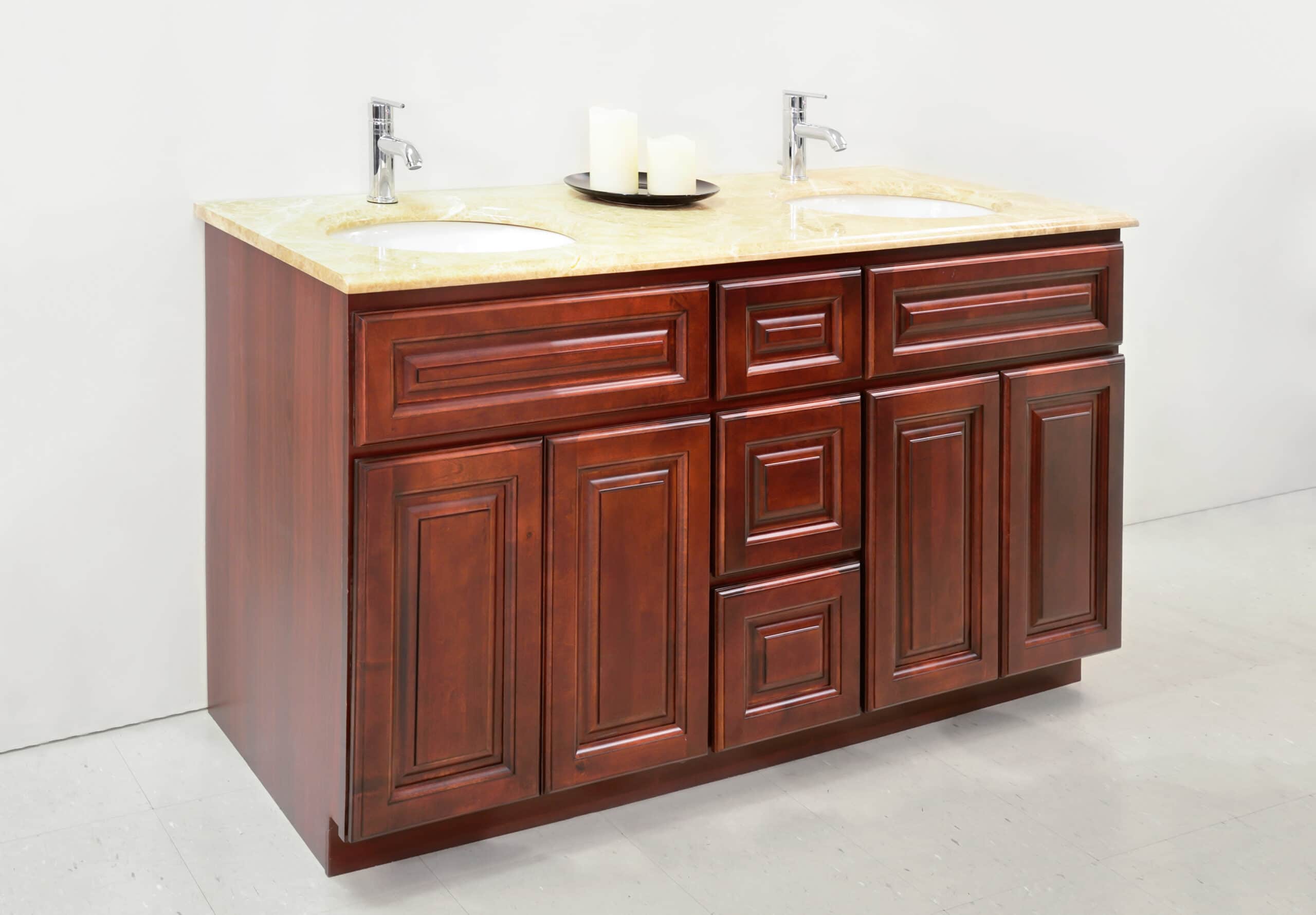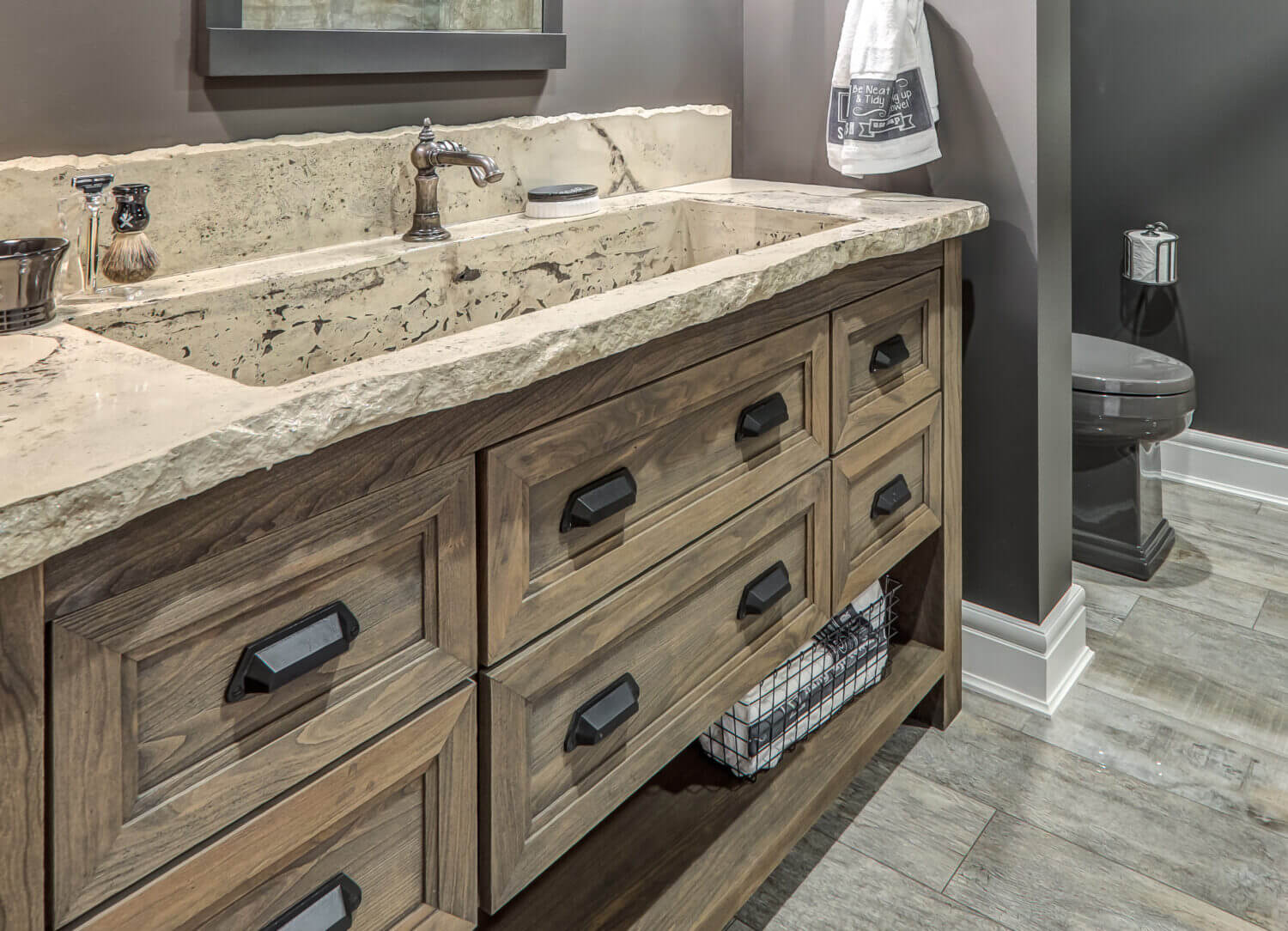Bathroom Vanity Styles in Vancouver, WA

Vancouver, WA, boasts a diverse range of bathroom vanity styles, catering to various tastes and preferences. From classic elegance to modern minimalism, homeowners can find the perfect vanity to enhance their bathroom’s aesthetic and functionality. Understanding the unique characteristics of each style allows for informed decision-making and a bathroom that reflects personal style.
Popular Bathroom Vanity Styles in Vancouver, WA
The popularity of bathroom vanity styles in Vancouver, WA, reflects the city’s diverse architectural landscape and homeowner preferences. Traditional, modern, contemporary, and farmhouse styles are prominent, each offering distinct design elements and features.
- Traditional: Traditional bathroom vanities exude timeless elegance and sophistication. They often feature intricate carvings, ornate hardware, and rich wood finishes like mahogany or cherry. These vanities typically have a classic pedestal or double sink design, with detailed molding and decorative accents.
- Modern: Modern bathroom vanities prioritize clean lines, minimalist aesthetics, and functionality. They are characterized by sleek surfaces, geometric shapes, and a focus on simplicity. Materials like chrome, stainless steel, and high-gloss laminates are commonly used. Modern vanities often feature open shelving or drawers with integrated handles.
- Contemporary: Contemporary bathroom vanities bridge the gap between traditional and modern styles, incorporating elements of both. They feature a blend of clean lines, natural materials, and subtle design details. Contemporary vanities often utilize a combination of wood, metal, and stone, with a focus on functionality and durability.
- Farmhouse: Farmhouse bathroom vanities evoke a rustic charm and cozy atmosphere. They typically feature distressed wood finishes, exposed hardware, and a focus on natural materials. Farmhouse vanities often have a simple, functional design with open shelving or drawers for storage.
Bathroom Vanity Materials
The materials used in bathroom vanities play a crucial role in their durability, aesthetics, and overall style. Common materials include wood, stone, and metal, each offering unique properties and benefits.
- Wood: Wood is a popular choice for bathroom vanities, offering warmth, natural beauty, and durability. Popular wood species include oak, maple, cherry, and walnut. Wood vanities can be stained or painted to complement the bathroom’s overall décor.
- Stone: Stone, such as granite, marble, or quartz, adds a touch of elegance and sophistication to bathroom vanities. Stone surfaces are durable, resistant to scratches and stains, and offer a wide range of colors and patterns.
- Metal: Metal accents, such as chrome, stainless steel, or bronze, are often used in bathroom vanities for their durability and modern aesthetic. Metal can be incorporated in hardware, legs, or frames, adding a touch of sophistication and functionality.
Bathroom Vanity Size and Configuration: Bathroom Vanities Vancouver Wa

The size and configuration of your bathroom vanity are crucial considerations for creating a functional and aesthetically pleasing space. Choosing the right vanity involves assessing your bathroom’s size and layout, personal preferences, and storage needs.
Vanity Size and Configuration Options
The size of your bathroom vanity is determined by the dimensions of your bathroom and your desired storage capacity. Common vanity sizes range from 24 inches to 72 inches in width. Smaller vanities are suitable for compact bathrooms, while larger vanities can accommodate more storage and double sinks.
Here is a table showcasing different bathroom vanity sizes and configurations:
| Vanity Size (Inches) | Configuration | Suitable for | 24-30 | Single Sink | Small Bathrooms | 36-48 | Single Sink | Medium-Sized Bathrooms | 48-60 | Double Sink | Large Bathrooms | 60-72 | Double Sink | Very Large Bathrooms |
|---|
Vanity Configurations
Vanities come in various configurations to suit different bathroom layouts and needs. Here are some common vanity configurations:
Single Vanity
A single vanity features a single sink and countertop, typically suitable for smaller bathrooms or individuals.
Pros:
* Compact: Takes up less space, ideal for small bathrooms.
* Affordable: Generally less expensive than double vanities.
* Simple: Easy to install and maintain.
Cons:
* Limited Storage: May not offer enough storage for multiple users.
* Less Counter Space: May not have enough space for toiletries and other items.
Double Vanity
A double vanity features two sinks and countertops, providing ample storage and counter space.
Pros:
* Spacious: Offers ample counter space and storage for multiple users.
* Convenience: Allows multiple people to use the vanity simultaneously.
* Luxurious: Creates a spacious and luxurious feel.
Cons:
* Large Footprint: Requires a larger bathroom to accommodate.
* More Expensive: Generally more expensive than single vanities.
* More Complex Installation: May require professional installation.
Corner Vanity
A corner vanity utilizes a corner space in the bathroom, maximizing space efficiency.
Pros:
* Space-Saving: Ideal for small bathrooms with limited space.
* Unique: Adds a unique and stylish element to the bathroom.
* Versatile: Can be used for various storage needs.
Cons:
* Limited Counter Space: May have less counter space than other configurations.
* Accessibility: May be difficult to access for people with mobility limitations.
* Complex Installation: May require professional installation.
Choosing the Right Vanity
When selecting a bathroom vanity, consider the following factors:
* Bathroom Size: Measure your bathroom carefully to determine the available space for a vanity.
* Layout: Consider the layout of your bathroom, including the location of plumbing and fixtures.
* Storage Needs: Assess your storage needs and choose a vanity with enough cabinets, drawers, and shelves.
* Style: Select a vanity that complements the overall style of your bathroom.
* Budget: Set a budget for your vanity and choose one that fits within your price range.
Remember: The size and configuration of your bathroom vanity are important factors in creating a functional and aesthetically pleasing bathroom space. Carefully consider your bathroom’s size, layout, storage needs, and style preferences when choosing a vanity.
Bathroom Vanity Features and Functionality

Beyond aesthetics, bathroom vanities offer a range of features that enhance functionality and convenience. Understanding these features allows you to select a vanity that perfectly suits your needs and lifestyle.
Bathroom Vanity Features
The features of a bathroom vanity play a crucial role in its functionality and overall user experience. Here’s a breakdown of some common features and their advantages:
Storage Options
Storage is a key consideration for bathroom vanities. It helps keep your bathroom organized and clutter-free. Here’s a table comparing various storage options:
| Storage Option | Description | Advantages | Disadvantages |
|---|---|---|---|
| Drawers | Provide enclosed storage for toiletries, towels, and other items. | Offer easy access and organization. | Can be limited in size and may not be suitable for bulky items. |
| Cabinets | Provide larger storage space for items like towels, linens, and cleaning supplies. | Offer ample storage capacity. | May be more difficult to access items stored at the back. |
| Open Shelves | Provide easy access to frequently used items. | Offer quick access and visual appeal. | May make the bathroom appear cluttered if not organized properly. |
| Medicine Cabinets | Provide enclosed storage for medications and other personal items. | Offer a dedicated space for storing medications and other personal items. | May be limited in size and may not be suitable for larger items. |
Countertop Materials
The countertop material of your bathroom vanity plays a crucial role in its durability, aesthetics, and functionality. Here’s a comparison of popular countertop materials:
| Countertop Material | Advantages | Disadvantages |
|---|---|---|
| Granite | Durable, heat-resistant, scratch-resistant, unique patterns. | Porous, requires sealing, can be expensive. |
| Quartz | Non-porous, scratch-resistant, stain-resistant, wide range of colors and patterns. | Can be expensive, may be less natural than granite. |
| Marble | Elegant, unique patterns, adds a luxurious feel. | Porous, prone to staining, requires regular sealing, can be expensive. |
Sink Types
The sink is a key element of any bathroom vanity. Choosing the right sink type can significantly impact the functionality and aesthetics of your bathroom. Here are some popular sink types:
- Undermount Sinks: These sinks are mounted underneath the countertop, creating a seamless and elegant look. They are easy to clean and offer ample counter space. However, they can be more expensive to install.
- Above-Counter Sinks: These sinks are placed on top of the countertop, providing a more traditional look. They are generally less expensive than undermount sinks and easier to install. However, they can make the countertop appear smaller.
- Vessel Sinks: These sinks are placed on top of the countertop, but they are more decorative and often come in unique shapes and materials. They can add a statement to your bathroom, but they may be more difficult to clean and can take up more counter space.
Innovative Vanity Features, Bathroom vanities vancouver wa
Beyond the standard features, many modern vanities incorporate innovative elements that enhance functionality and aesthetics. Here are some examples:
- Built-in Lighting: Integrated LED lighting under the countertop or within the vanity mirror can provide excellent illumination for grooming tasks, while also creating a stylish ambiance.
- Towel Bars: Some vanities feature integrated towel bars, providing a convenient and space-saving solution for hanging towels. These bars can be incorporated into the side of the vanity or even built into the countertop.
- Integrated Storage: Modern vanities often feature clever storage solutions like hidden compartments, pull-out drawers, and even built-in charging stations for electronics.
